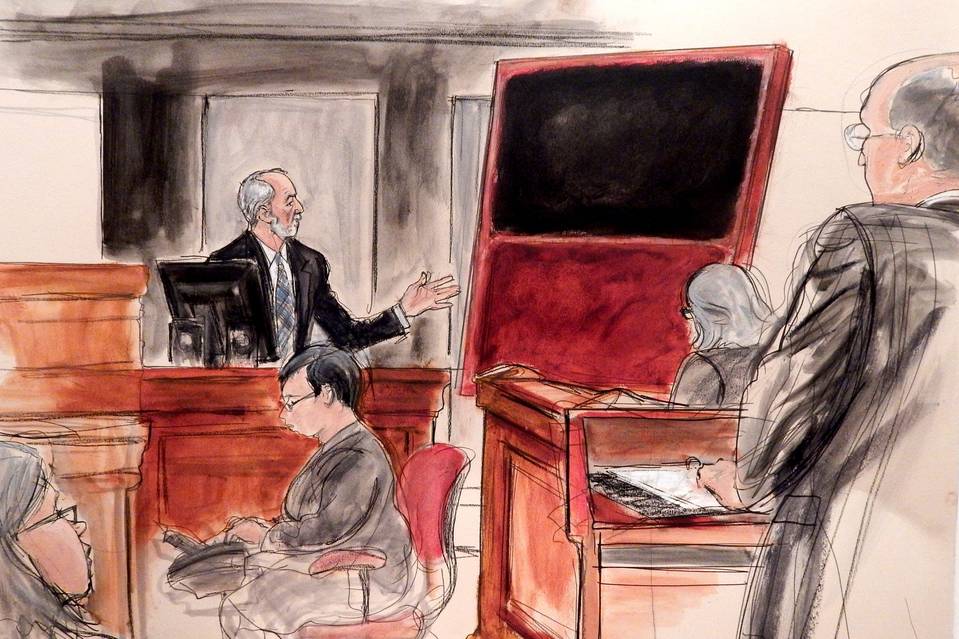
After more than eight years of legal wrangling over tens of millions of dollars worth of forged artworks sold through the now-shuttered Knoedler Gallery, the 10th and final federal lawsuit, over a $5.5 million fake Mark Rothko, was settled earlier this month.
The case was first filed in 2013 by the Lichtenstein-based Hilti Family Trust, which purchased the painting in 2002. After reports first started circulating around 2011 about authenticity concerns for a trove of Abstract Expressionist paintings sold through Knoedler, the trust submitted paint from their work for forensic analysis, and learned that the work was a fake.
The case initially named a lengthy list of defendants, including Knoedler Gallery, its former president, Ann Freedman, gallery owner Michael Hammer, and his related company, 8-31 Holdings, as well as Long Island dealer Glafira Rosales, the only person convicted in a related criminal investigation, and Jose Carlos Bergantiños Diaz, Rosales’s former partner, who reportedly hired Queens-based Chinese painter Pei-Shen Qian to create the works.
Bergantiños-Diaz fled to Spain and has managed to avoid extradition, while Qian has reportedly fled to China. Freedman already settled by mid-July, the Art Newspaper reported. By that time, the remaining defendants were Knoedler, 8-31 Holdings, and Hammer.
In mid-July, the presiding judge in the case, Paul Gardephe, issued an order of dismissal, noting that “all claims herein have been settled,” and that the case was dismissed “with prejudice.” However, “if the settlement is not consummated within 45 days of this order,” according to court papers, either party was entitled to apply for “restoration of the action.”
Follow-up orders from Judge Gardephe issued on On August 7 and 8 contained no further detail about the terms of the settlement. None of the attorneys for the plaintiffs or defendants responded to request for comment.
End of an Era
The settlement marks the end of a drawn-out, high-stakes legal saga that included only one case that made it to trial.
That case, filed in early 2016 by collector Domenico De Sole, a Sotheby’s board member and former Gucci executive who had also purchased a fake Rothko painting in 2004, eventually settled, but not before a string of experts laid out a damning trail of misinformation that showed how Knoedler had helped create a false story about a mysterious collector, referred to as “Mr. X,” who had amassed a trove of Abstract Expressionist paintings in the 1950s and ’60s. The story was used to explain the lack of provenance, or ownership history, of the paintings.
Forensic testing of many of the works showed that paints used to create them were not commercially available at the time the artworks were supposedly created. An investigation by the US Justice Department eventually revealed that most, if not all, of the works were created by Pei-Shen Qian at the behest of Bergantiños-Diaz in Qian’s home in Queens. The works were subjected to artificial aging techniques, including staining canvases with tea bags to make them appear older.
Following the settlement of the 2016 trial, De Sole told artnet News that when the forensic report first came back, Knoedler officials “were insistent that this was not the case and that it was authentic.”
“My point of view was, ‘Fine, if it’s authentic, give me my $8.3 million back and I’ll walk away. Now you can sell this authentic Rothko for more than twice as much, $18 million, or whatever, and you can make a huge profit,'” De Sole said. “When they absolutely refused to do that, I knew that, one, the Rothko was definitely a fake; and two, they knew for sure that it was a fake.”